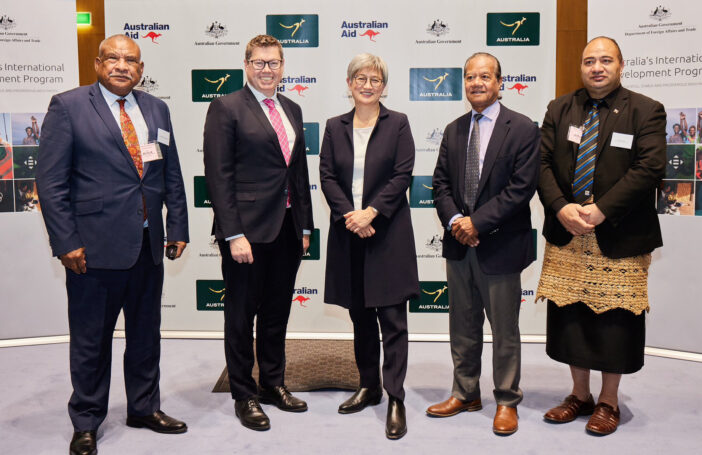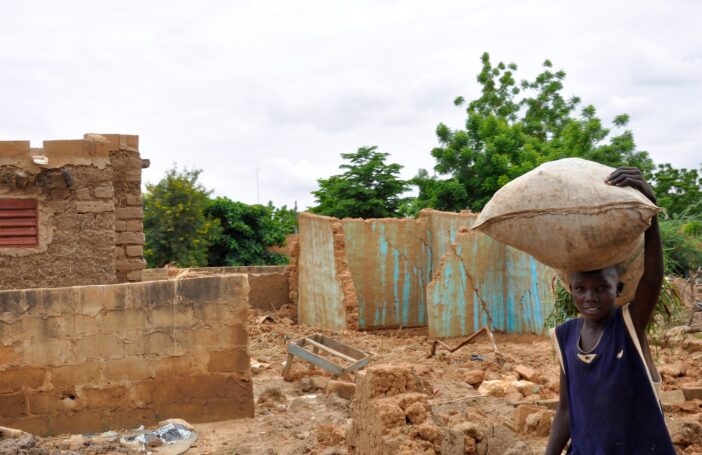Right from the start, reading the new Australian international development policy left me tense. It wasn’t competing deadlines. It wasn’t my posture. It wasn’t even a reaction to bureaucratic prose. It was the way the policy struggles with competing impulses, tensely trying to bear their burden.
Where did these impulses come from? I wasn’t there when the policy was written, but I suspect the following actors all had an influence.
First, there’s the new government. Senior Labor MPs, including the current foreign minister, have expressed strong, and I think sincere, support for aid in the past. We also know from NGO parliament visits (pages 6-13) that Labor MPs tend to be more supportive of aid than their Coalition counterparts. Labor also holds broader progressive values such as women’s empowerment and empowering First Nations Australians. Like all Australian governments, this one’s also firmly attached to its Western allies, and is ever-wary of gifting the opposition anything it could frighten voters with.
Then there’s civil society. Also values-based, it meets with MPs, campaigns, and speaks to the media. Development civil society isn’t omnipotent, but it has some influence. There are academics too of course: we have our views and push our causes.
There’s also DFAT itself. It consulted widely when preparing the policy. Internally, it’s a foreign ministry, not an aid agency, so some people in DFAT don’t care about aid. Many don’t understand it. (And to be fair, why should they? It’s not their job, they’re diplomats.) But there are people within the department who genuinely want to give aid well: some are remnants from AusAID, others have learnt the importance of international development. And some, of course, are interested in aid for other reasons, particularly geopolitical leverage.
Which brings me to China. As Cameron Hill has pointed out, China’s not actually named in the policy, but it haunts the document, peeking around the ends of paragraphs, chuckling menacingly. China was clearly on a lot of people’s minds when the policy was written.
I don’t like China’s repressive government, but as I’ve written before, I think its threat is overstated. The threat of climate change, on the other hand, is not. And it was also clearly on policymakers’ minds as they wrote the policy. All the more so, I presume, because Pacific Island politicians view climate change as the region’s most pressing problem. If the Australian government sincerely cares about the Pacific, or even if it just wants Pacific leaders to think it cares more than China does, it has to take action on the climate.
Action needs to take many forms, but one is particularly relevant to the policy: climate finance. Climate finance is funding to help developing countries reduce their own emissions or adapt to climate change. Although climate finance can come from other sources, aid has been central to Australia’s efforts to date. So far, Australian climate finance spending has been underwhelming though. And so the government is eager to at least nominally devote more aid to this cause.
That brings me to the final source of tension: out of fear of being seen as a spendthrift, the current government has imposed tight budget constraints on many things, including aid, which is not set to increase in real terms in coming years.
The result of all this is a policy that emphasises statecraft (read ‘geopolitics’) and Australia’s national interest, in addition to incorporating indigenous Australian principles, as well as multilateral engagement, regionalism and localisation, alongside apparently arithmetically incompatible promises about gender and climate finance, ‘reinvigorating’ scholarships, building effective states and more, all at a time when aid budgets are set to increase no faster than inflation. Unless Australia is planning to chase China out of the Pacific with feminist wind turbines built by the World Bank, this just doesn’t seem possible.
I say this as someone who likes many of the policy’s promises. In addition to the recognition that climate change and women’s empowerment are crucial development issues – which is great in principle, even if the numbers don’t work – there are tangible commitments to improve transparency, the development skills of DFAT staff, and evaluations. These are feasible improvements, and essential if Australia ever wants to give aid well. As a political scientist, I understand the importance of effective states too.
The trouble is, thanks to its many influences, an awful lot is being asked of Australian aid by the policy. Too much. It ought to make you feel tense. Aid can do many things, but it can’t do them all at once.
All blogs on the 2023 Australian international development policy can be found here.





Yes, one instrument and multiple targets (some implicit) is a recipe for not knowing what to do (or what you achieved). Yet in voter’s minds “aid” is still about directly helping poor people. Do we need a new nomenclature? What is an acceptable synonym for “soft power investments”?
Thank you Adam,
My preference would be an aid budget that funded spending for genuinely help people. This would be inline with most Australians’ understandings of why Australia gives aid, and inline with most Australians’ preferences for what aid should be focused on.
The task of buying the loyalties of recalcitrant developing country politicians or whatever could be funded from the ever-growing military budget. Calling it soft power would be a great term (given that power is what the military is all about). The funding could be subject to genuine cost benefit analysis, and the traded off against more subs or whatever.
Terence
Thank you Terence, very well said! Strategy is about what we will prioritise as well as what will not be done. This is a ‘do everything for everyone’ policy without additional funding. DFAT is spreading itself and the aid program too thinly.
Thanks Scott!